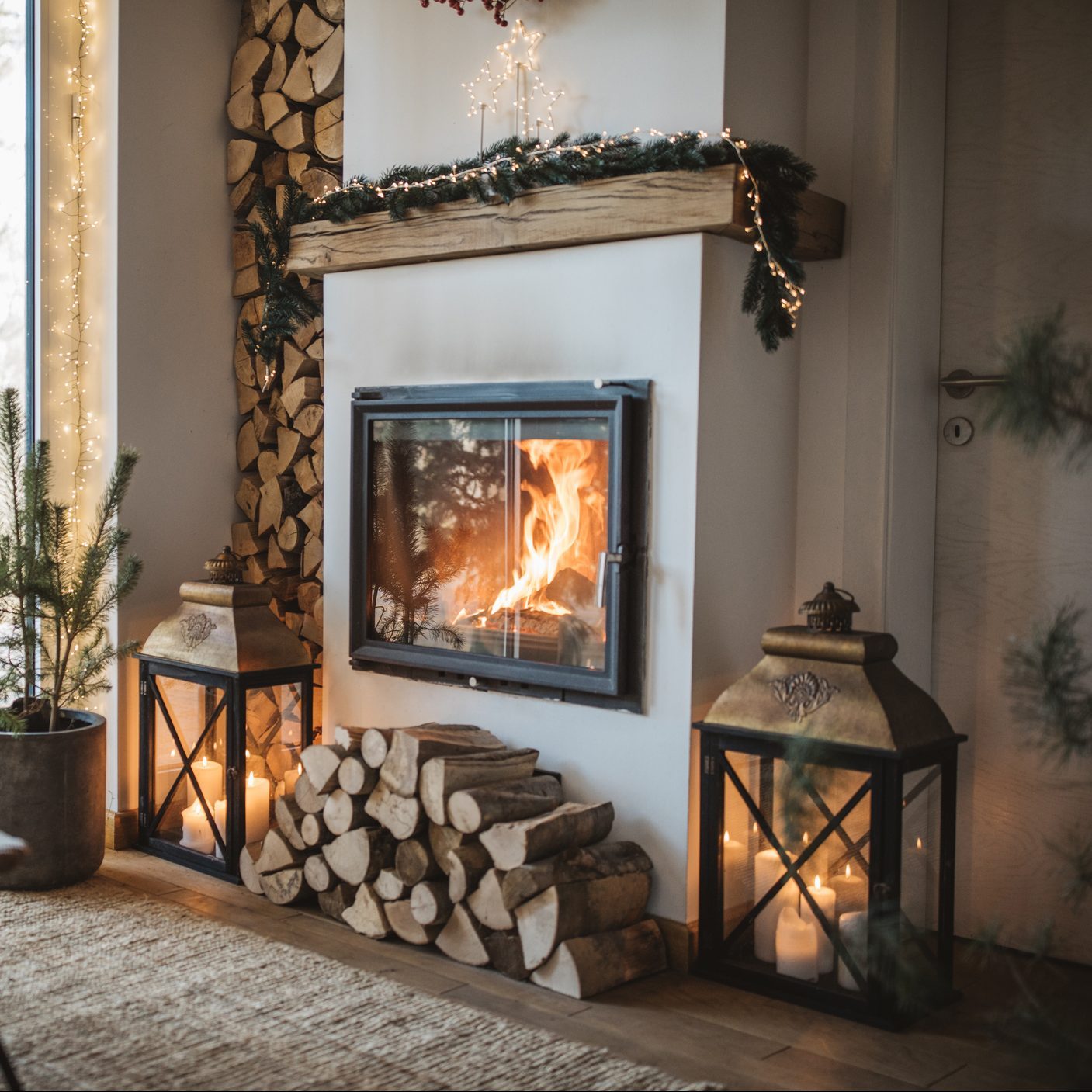Chestnuts roasting on an open fire in your wood-burning fireplace are wonderful until your heating bill arrives. Then you discover heat from your furnace goes up the chimney along with heat from the wood. Is there a way to increase the heat from your fireplace to lower your fuel costs?
Yes! Here are nine ways from Leroy Hite, CEO and founder of Cutting Edge Firewood in Peachtree Corners, Georgia.
Burn Good Wood
Often, what passes as firewood has been in a pile for years, rotting and growing mushrooms. Turns out rotted wood generates less heat than the rot-free kind.
“Good wood burns hotter for three reasons,” says Hite. “One, it’s much drier. When wood has moisture, it has to burn to get rid of the water before it starts producing heat.
“Second, good wood has no rot. Rotten wood is lighter than good wood, so there is less wood to burn. Third, good wood often means good hardwoods. When you burn good oak or hickory, which are hardwoods, the fire burns very hot.” Get to know how to put out a fire in a fireplace safely.
Coals Are Your Goal
“You want to build a coal base, which generates heat and drives it upward,” says Hite.
Start the fire with small pieces, Hite says. Then as the fire gets going, add pieces at least an inch thick. These make coals that put off a lot of heat. Adding even larger pieces after that increases the coal base and the heat output.
Stack Wood Log Cabin Style
In your fireplace, put two or three logs down as a foundation. Then place two or three more logs on top of those in a crisscross manner. “This allows for plenty of oxygen for the wood to burn,” says Hite. “The more oxygen the fire has, the hotter it burns.”
Get a Fire Back
A fire back is a cast iron upright standalone plate in the back of your fireplace. It deflects heat outward while protecting the back of the fireplace. “Adding a fire back to your fireplace is an easy way to increase heat output 20% to 25%,” says Hite.
Use Andirons, Not a Grate
Andirons are bracket supports for logs in an open fireplace. They create more heat than grates because they increase airflow around the logs, Hite says.
“Grates are more traditional than useful,” says Hite. “In the past, the English cut down almost all of their trees and therefore used charcoal or coal instead of wood in their fireplaces. Grates hold charcoal better than andirons, and so we inherited grates from the English.”
Build a New Fireplace
OK, this is not for everyone. But if you’re building or remodeling a home, it’s worth considering if you want most heat-efficient fireplace possible.
“It’s worth it to build a new fireplace, but do it with real stone or brick, not a metal insert that is fabricated offsite,” says Hite. “Real stone or brick is more expensive, but it is build onsite and lasts much longer and produces way more heat.”
Add a Fireplace Insert
There are many fireplace insert designs. The idea is, the fire heats tubes in the fireplace, and the tubes return heat to the room. “Those are phenomenal,” says Hite. “Inserts are a way to increase the heat from your fireplace.”
Cool It With Cleaning
“Cleaning does not increase heat output,” says Hite. Clean out ashes when you have so much that’s it difficult to start a fire. “Also, a little ash in the bottom of the fireplace protects it from heat,” he says. Here are several other ways to use fireplace ash.
Use a Yule Log
When enjoying an evening fire, be sure to keep the damper open even after you’ve gone to bed. If it’s closed, you risk a buildup of carbon monoxide. Of course, this also means you’ll lose some furnace heat as well.
Hite has a solution: “You can put a big Yule log on the fire if your coal base is thick and will be hot enough to keep a big log burning and producing enough heat to offset the heat lost up the chimney,” he says.
The Yule log, BTW, was originally an entire tree. Families would bring the trunk of the Yule tree inside and piece-by-piece feed the fire through the Twelve Days of Christmas.
ⓘ




















